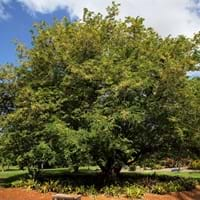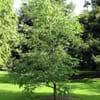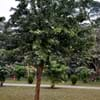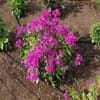Life Span
Perennial
Perennial
Origin
Asia, Europe, North America
Africa, India, Southeast Asia
Types
Black Ash, Blue Ash, California Ash, Carolina Ash, European Ash
Sweet Tamarind, Australian tamarind, Manila tamarind, Velvet tamarind, Spanish Tamarind
Number of Varieties
Not Available
Habitat
Forest edges, Hillside, Woods
Subtropical climates, Tropical regions
USDA Hardiness Zone
3-9
9-11
AHS Heat Zone
12-8
Not Available
Sunset Zone
9, 12, 13, 14, 15, 16, 17, 18, 19, 20, 21, 22, 23, 24
Not Available
Habit
Oval or Rounded
Spreading
Flower Color
White
Red, Yellow
Flower Color Modifier
Not Available
Bicolor
Fruit Color
Not Available
Brown
Leaf Color in Spring
Dark Green
Green
Leaf Color in Summer
Dark Green
Dark Green, Green
Leaf Color in Fall
Dark Green
Dark Green, Yellow green
Leaf Color in Winter
Dark Green
Dark Brown, Green
Leaf Shape
Oblovate
Pinnate
Plant Season
All year
Spring, Summer, Fall, Winter
Sunlight
Full Sun, Part sun
Full Sun, Partial Sun
Type of Soil
Loamy, Sandy
Clay, Loam, Sand
The pH of Soil
Acidic
Acidic
Soil Drainage
Well drained
Average
Bloom Time
Late Spring, Spring
Late Spring
Tolerances
Drought, Pollution, Soil Compaction
Drought, Salt
Where to Plant?
Ground
Ground
How to Plant?
Grafting, Seedlings, Stem Planting, Transplanting
Layering, Seedlings, Transplanting
Plant Maintenance
Medium
Low
Watering Requirements
Does not require lot of watering, Medium, Prefer drip-irrigation instead of Over-head watering
Do Not over Water, Keep the ground moist but not water-logged
In Summer
Lots of watering
Lots of watering
In Spring
Moderate
Moderate
In Winter
Average Water
Average Water
Soil Type
Loamy, Sandy
Clay, Loam, Sand
Soil Drainage Capacity
Well drained
Average
Sun Exposure
Full Sun, Part sun
Full Sun, Partial Sun
Pruning
Prune in winter, Prune prior to new growth
Remove damaged leaves, Remove dead branches, Remove dead leaves
Fertilizers
All-Purpose Liquid Fertilizer
6-6-6 or 8-8-8
Pests and Diseases
Bark splits, Crown gall, Epicormic Sprouting, Woodpecker feeding
Aphids, Borers, Mealybugs, Onion thrips, Root weevil, Soft scales, Whiteflies
Plant Tolerance
Drought
Drought
Flower Petal Number
Single
Single
Foliage Texture
Medium
Bold
Foliage Sheen
Glossy
Matte
Attracts
Birds
Beetles, Birds, Scale Insects
Allergy
Not Available
Diarrhea, Hives, Nausea, Vomiting
Aesthetic Uses
Not Used For Aesthetic Purpose
Beautification
Beauty Benefits
Not Available
Glowing Skin, Good for skin, Improve skin tone, Reduces ageing, Skin cleanser
Environmental Uses
Air purification
Food for animals, Food for birds, Food for insects, Nesting sites for birds
Medicinal Uses
Fever, Liver problems
Antioxidants, Inflammation, Rheumatism, Skin Disorders, Sore throat
Part of Plant Used
Leaves, Stem
Flowers, Fruits, Leaves
Other Uses
Used as Ornamental plant
Culinary use, Used as a nutritious food item, Used as Ornamental plant, Used for its medicinal properties
Used As Indoor Plant
No
No
Used As Outdoor Plant
Yes
Yes
Garden Design
Shady Tree, Showy Tree
Edible, Fruit / Fruit Tree, Shade Trees
Botanical Name
Fraxinus
Tamarindus indica
Common Name
Ash Tree
Tamarind tree, Tamarind
In Hindi
राख पेड़
इमली का पेड़
In German
Esche
Tamarinde
In French
Frêne
tamarinier
In Spanish
Fresno
tamarindo
In Greek
δέντρο Ash
δέντρο Tamarind
In Portuguese
Freixo
tamarindo
In Polish
Jesion
drzewo tamaryndowca
In Latin
Fraxinum
tamarind ligno
Phylum
Anthophyta
Magnoliophyta
Class
Magnoliopsida
Magnoliopsida
Genus
Fraxinus
Tamarindus
Clade
Angiosperms, Asterids, Eudicots
Angiosperms, Eudicots, Rosids
Subfamily
Not Available
Caesalpinioideae
Number of Species
Not Available
Season and Care of Ash Tree and Tamarind tree
Season and care of Ash Tree and Tamarind tree is important to know. While considering everything about Ash Tree and Tamarind tree Care, growing season is an essential factor. Ash Tree season is All year and Tamarind tree season is All year. The type of soil for Ash Tree is Loamy, Sandy and for Tamarind tree is Clay, Loam, Sand while the PH of soil for Ash Tree is Acidic and for Tamarind tree is Acidic.
Ash Tree and Tamarind tree Physical Information
Ash Tree and Tamarind tree physical information is very important for comparison. Ash Tree height is 75.00 cm and width 45.00 cm whereas Tamarind tree height is 1,800.00 cm and width 800.00 cm. The color specification of Ash Tree and Tamarind tree are as follows:
Ash Tree flower color: White
Ash Tree leaf color: Dark Green
Tamarind tree flower color: Red and Yellow
- Tamarind tree leaf color: Green
Care of Ash Tree and Tamarind tree
Care of Ash Tree and Tamarind tree include pruning, fertilizers, watering etc. Ash Tree pruning is done Prune in winter and Prune prior to new growth and Tamarind tree pruning is done Remove damaged leaves, Remove dead branches and Remove dead leaves. In summer Ash Tree needs Lots of watering and in winter, it needs Average Water. Whereas, in summer Tamarind tree needs Lots of watering and in winter, it needs Average Water.





